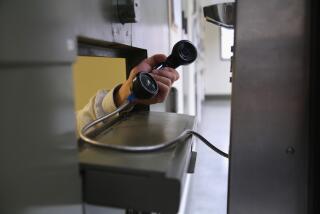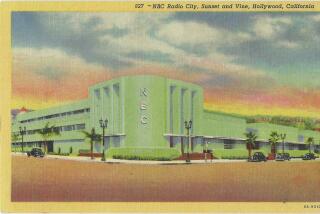911 Deaf Service Inadequate, Papers Show
State and telephone company officials responsible for making the 911 emergency phone system accessible to the deaf advertised the service even when they knew that some operators had not been trained adequately, court documents show.
The documents, letters and memos filed in the case of a San Diego woman who died after a 911 operator hung up on her deaf husbandâs calls show that officials knew in March, 1986, that some 911 operators in California had not yet learned how to answer calls from the deaf.
But Pacific Bell went ahead and mailed out newsletters that month to users of telecommunications devices for the deaf (TDDs) advising them to stop using their traditional seven-digit emergency number because 911 was now available.
One phone company official even put his concerns about the problem in writing:
âIf we advise TDD users to dial 911 for emergency assistance and someone is injured as a result of that information, we may be held responsible for their injury,â wrote T.D. Walker, Pacific Bellâs 911 product manager, in a March 11 memo on file in Superior Court in San Diego. âParticularly since we know that the (answering center) in San Diego (and many others just like it) are not prepared to handle these calls.â
Special Seven-Digit Numbers
Under California law, all agencies operating 911 systems were to have made them accessible to TDDs by Jan. 1, 1986. In the past, deaf and hearing-impaired callers had used special seven-digit numbers such as 233-DEAF, the number used in San Diego.
But officials of the state Department of General Services, which coordinates the implementation of the 911 system statewide, and some local police agencies that operate the program were slow to implement the law, court documents show. The stateâs own training materials teaching operators how to process calls from the deaf were not sent out until late January.
And in San Diego, police officials admitted last July that they did not train their dispatchers until as late as April, 1986. They blamed the delay on mail delivery, saying the stateâs training materials were âmisdirectedâ and did not reach the 911 center.
The shortcomings of the system came to light July 17, 1986, when Jay Shufeldt, 74, returned to his San Diego home and found that his wife, Mary Bell, had collapsed. He has said he tried repeatedly to call 911 on his Teletype machine and was unable to get through.
He eventually reached his daughter, who can hear and who was able to call 911 from her home. But by the time paramedics arrived at the Shufeldtsâ house, Mrs. Shufeldt had died. The cause of death was chronic obstructive pulmonary disease.
An internal investigation by the San Diego Police Department, which operates the 911 system in San Diego, concluded in August, 1986, that a 911 operator had failed to recognize the signal transmitted by Shufeldtâs machine and had hung up on him twice.
Should Have Recognized Sound
Under the prescribed procedure, the operator should have recognized the sound of Shufeldtâs machine and immediately transferred the call to a TDD in the 911 center. There, another operator would take the call and communicate with Shufeldt via TDD.
The Shufeldt family is suing the dispatch operator, the city, county, state and Pacific Bell and its parent company, Pacific Telesis. The lawsuit, filed in Superior Court in May, accuses them of negligence that allegedly resulted in Mrs. Shufeldtâs death.
The new documents, filed by the Shufeldtsâ lawyer in support of his contention that the state should remain a defendant in the case, include letters, memos and minutes written by employees of the state and Pacific Bell working on the 911 program.
In a memo dated March 11, 1986, Walker, the phone companyâs 911 program manager, confided to another Pacific Bell employee that he was concerned that the state was not making sure that all 911 operators were fully trained.
âMy fear is that the state has not followed through with its commitment to train all (911 centers) on the proper handling of TDD calls,â Walker wrote. He went on to express concern about advertising the service when operators were insufficiently trained.
However, minutes of a Pacific Bell meeting the next week state that a phone company newsletter explaining the 911 system was sent on March 14 to 1,200 TDD users. The minutes also mention âconsiderable concernâ about the 911 operatorsâ ability to handle TDD calls.
Asked Tuesday why Pacific Bell would send out the 911 newsletter when it was aware that there were problems with the system, Pacific Bell attorney R. William Ferrante said the phone company had little choice.
âThe system was working for virtually all the state of California but for maybe a few locations,â he said. âSecondly, the state law that went into effect Jan. 1, 1986, made it mandatory that all persons be able to access 911.
âPowerlessâ to Fix Problem
âSo, ready or not, the state law says you must go for it. Our observations were fed back to the state and local cities saying, âLook, weâve encountered a problem. You need to fix it.â We were powerless to fix it. Weâre not in the business of training the operators to recognize those calls.â
Kristin Hogue, a deputy attorney general representing the state in the case, said Tuesday she could not comment on the matter because it is in litigation.
Also in connection with the case, an official police tape recording turned over to the Shufeldtsâ lawyer as part of the court discovery process includes the comments of the police dispatcher who received Mr. Shufeldtâs calls and failed to recognize the signal.
âOh, come on,â was the dispatcherâs initial reaction upon hearing the high-pitched beeping noise emitted by the machine. After more beeping, the woman muttered, âThe aliens have landed.â More beeping follows, then one or the other side hangs up.
More to Read
Sign up for Essential California
The most important California stories and recommendations in your inbox every morning.
You may occasionally receive promotional content from the Los Angeles Times.










